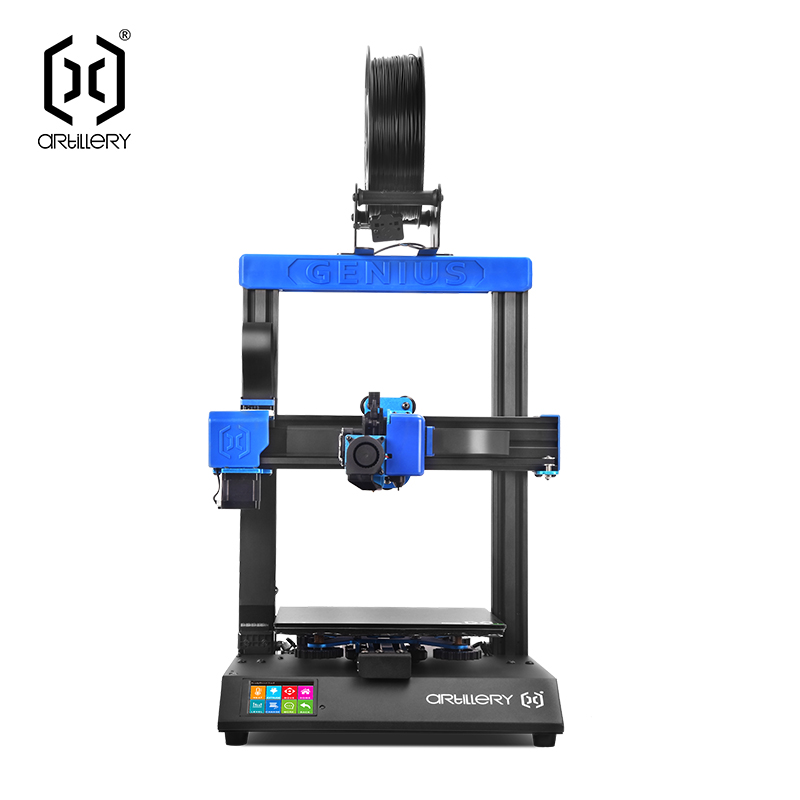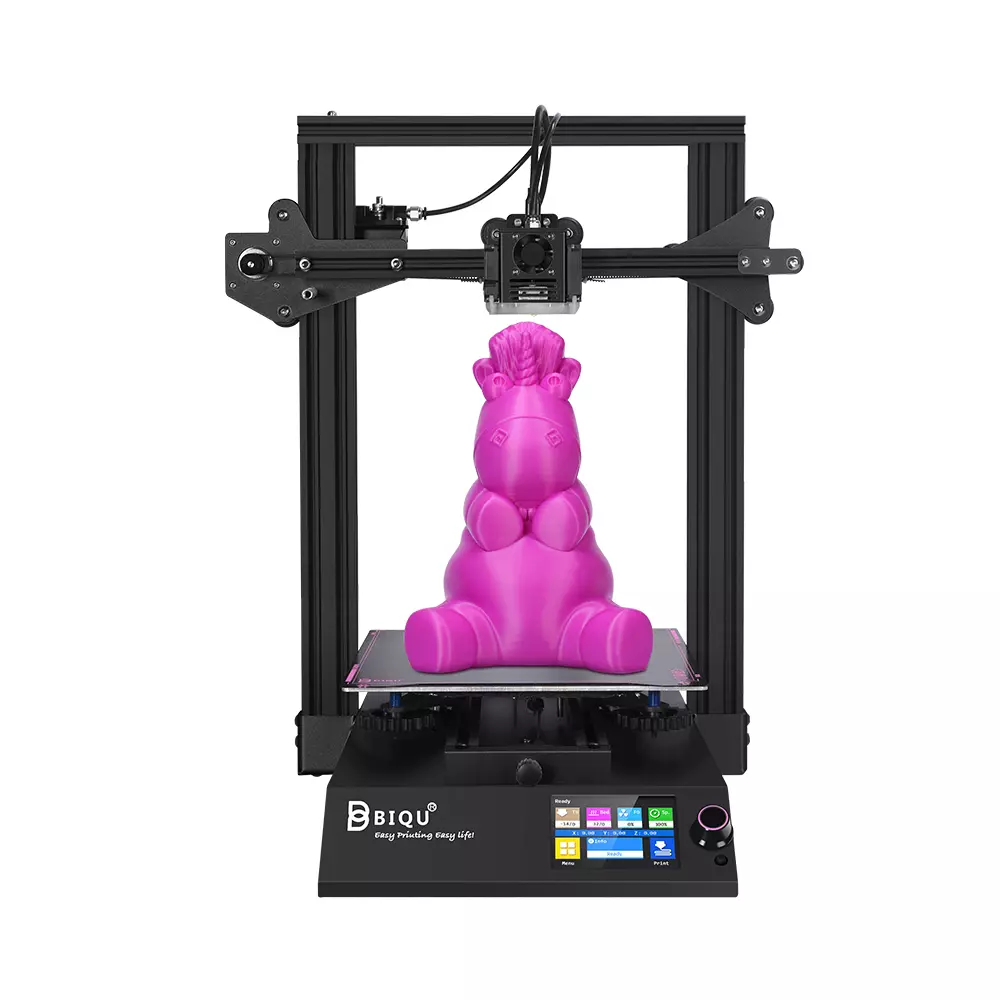Compare Genius Pro vs BIQU B1
Comparison between the best 3D printers
Choose the best 3D printer at the best price. The cheapest 3D printers are here.
Buy a 3D printer here with 3D Fila.
 |
 |
|
| Model | Genius Pro[BUY Genius Pro] |
BIQU B1 |
| Printing Material | Filament | Filament |
| Buy Filament for Artillery Genius Pro | Buy Filament forBigTreeTech BIQU B1 | |
| Estimated price | $309,00 | $269,00 |
| Manufacturer | Artillery | BigTreeTech |
| Release Year | 2022 | 2020 |
| Print Volume [mm] | 220x220x250 | 235x235x270 |
| Printer Size [mm] | 430x390x590 | 412x402x492 |
| Weight [kg] | 9,6 | 8,00 |
| Power Loss Recovery | YES | YES |
| Enclosed printer | NO | NO |
| Bed Leveling | Automatic | Manual |
| Filament End Sensor | YES | YES |
| Bed type | Heated | Heated |
| Power supply system | Direct Drive | Bowden |
| Standard nozzle | 0,4 | 0,4 |
| Maximum Nozzle Temperature [°C] | 240 | 250 |
| Maximum Bed Temperature [°C] | 120 | 100 |
| Maximum printing speed [mm/s] | 150 | 100 |
| Filament holder | YES | YES |
| Camera for supervision | NO | NO |
| Recommended filaments | PLA, PETG, Tritan, Flex, ABS | PLA, TPU, ABS, PETG |
| Recommended slicers | Cura, Simplify, Slic3r, IdeaMaker | Cura, Simplify, Slic3r |
| Maximum Resolution [mm] | 0,1 | 0,1 |
| Processor | Ruby 32bit | 32 Bits BTT SKR V 1.4 |
| Display | Touchscreen TFT 3,5'' | Touchscreen TFT 3,5'' |
| Power Supply | 24V / 360W | |
| Connectivity | SD / USB | SD / USB |
| Operating systems | Windows, Mac, Linux | Windows, Mac, Linux |
| Date of registration in the system | 2022-11-07 | 2021-04-14 |
| Release date | 2022 | 2020 |
| Extra features | The Artillery Genius Pro is a standout 3D printer with a fast-heating AC tempered glass print bed and a sleek design with a black aluminum base and blue accents. It features a Titan-style direct extruder and a 32-bit Ruby mainboard. Despite its advanced feature set, it struggles to maintain print quality, requiring frequent adjustments and calibrations, and its glued glass bed makes cleaning and replacement difficult. | The BIQU B1 is an advanced 3D printer with a silent 32-bit BTT SKR V1.4 motherboard and ARM Cortex-M3 CPU, offering DIY interfaces (I2C, SPI, WiFi) and dual Z-axis. Its dual BTT B1 TFT35 V3.0 operating system allows real-time monitoring and multiple printing modes, including G-code visualization effects. It stands out for its BIQU SSS (Super Spring Steel), ensuring easy model adhesion and simplified removal, with the possibility of using it on both sides. It includes a filament sensor, automatically pausing printing in case of filament breakage. The multicolored RGB lights integrated into the hotend allow you to view the printing status even at night. Additional notes include the need for a BIQU-specific Type-C cable and extra interfaces for smart filament sensor and BL Touch. |
| Support for multiple colors and materials (AMS and CFS) | NO | NO |
Notes * |
||
| Cost-benefit | 7 / 10 | 6 / 10 |
| Hardware | 2.8 / 10 | 2 / 10 |
| Tela | . | . |
| Print volume | 3 / 10 | 3 / 10 |
| Performance | 1 / 10 | 0 / 10 |
| [BUY Genius Pro] |
Conclusion |
| In comparing the Artillery Genius Pro and the BIQU B1 3D printers, both models present unique strengths and weaknesses that cater to different user needs. The Genius Pro, while slightly more expensive, boasts superior maximum printing speed, advanced heating capabilities, and an overall sleek design. However, it has been reported to require more frequent adjustments and calibrations to maintain print quality, which may deter users who prefer a more plug-and-play experience. On the other hand, the BIQU B1, with its larger print volume and effective dual B-axis, offers additional features like real-time monitoring and easy model removal thanks to its innovative bed design. Although the BIQU B1 is slightly less costly, its hardware performance ratings are lower than that of the Genius Pro, which might reflect a trade-off in build quality or longevity. Ultimately, the choice between the two depends on user preferences and priorities. Those seeking higher speeds and advanced features may gravitate towards the Genius Pro, despite its complexities. Conversely, users who value ease of use, larger print capacity, and multi-functional capabilities may find the BIQU B1 to be the better option. In terms of cost-benefit analysis, both printers are rated similarly, suggesting that either choice provides reasonable value for the performance offered. |

